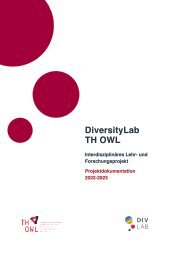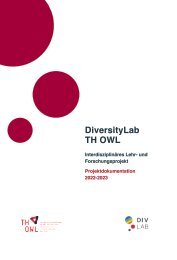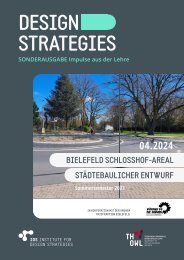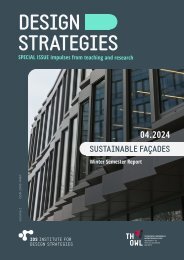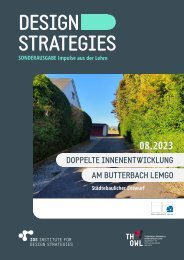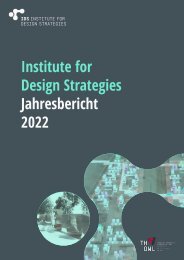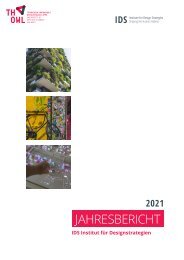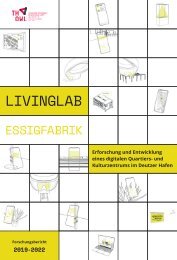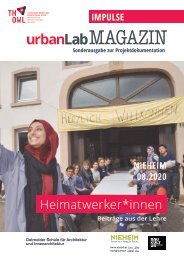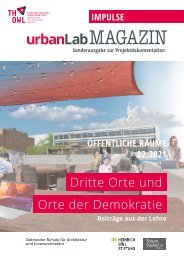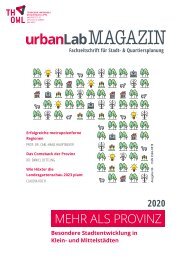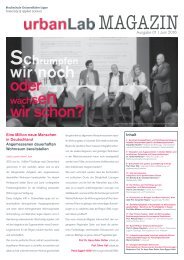urbanLab Magazin 2021 - Transformation
Erfolgreiche ePaper selbst erstellen
Machen Sie aus Ihren PDF Publikationen ein blätterbares Flipbook mit unserer einzigartigen Google optimierten e-Paper Software.
Ways of interaction<br />
CONCLUSION<br />
Although it comes with simplifications<br />
and developments left for the future,<br />
the system showed great potential in<br />
supporting urban design decisions.<br />
The simulation of different scenarios in<br />
the district, by changing parameters of<br />
population demographics and building<br />
use, resulted in a big impact on the calculated<br />
urban vitality of the public spaces.<br />
This response of the model not only<br />
highlights some obvious assumptions<br />
– such as areas closer to connecting<br />
bridges being more frequented – but<br />
also shows surprising results in different<br />
settings – like how easy it is to lose<br />
visitors when removing just part of the<br />
commercial buildings.<br />
Many uncertainties still remain due to<br />
simplifications in the agent-based model<br />
and limited data and technical resources.<br />
Despite that, how the agents<br />
built from the social media profiles<br />
behave in the simulations, from where<br />
and when they go to which mobility<br />
mode they choose, was not very distant<br />
of how real people are expected<br />
to behave. In the future, it would be interesting<br />
to see how adding household<br />
information to the population or more<br />
transportation modes could affect the<br />
results. Modelling a bigger area of the<br />
city and running the model with a bigger<br />
sample of the population could also<br />
bring improvement.<br />
Despite still not have been tested in a<br />
bigger group due to the current social<br />
distancing rules, the tangible user interface<br />
performed well between a small<br />
group of people, being easily understandable,<br />
intuitive and giving almost<br />
immediate feedback to the user when<br />
interacted with. Built with a much more<br />
affordable set-up than similar tools, it<br />
still has the potential of being reused<br />
for different projects, just by replacing<br />
the tabletop and keeping the rest of the<br />
hardware. Also approachable was the<br />
concept of the agents in the simulation<br />
being based on real people from social<br />
media, as noted by a colleague who interacted<br />
with the table. Such feedback<br />
hints at the potential of making citizens<br />
feeling recognized in urban design decisions,<br />
since social media is so familiar to<br />
almost everybody nowadays. Even with<br />
the possibility of privacy concerns raising,<br />
as discussed earlier, people tend<br />
to feel comfortable in having their data<br />
used when they know how, why and for<br />
what it will be used, in which the TUI is a<br />
powerful tool in clarifying some of these<br />
questions and showing to what their<br />
data would be contributing to.<br />
The project was presented as part of<br />
the Detmold Conference Week 2020<br />
and experts from building industry, real<br />
estate management and urban planning<br />
gave valuable feedback. A paper<br />
about it was published and presented<br />
at the REAL CORP <strong>2021</strong> Conference in<br />
Vienna. -<br />
134 STUDENT IDEAS




